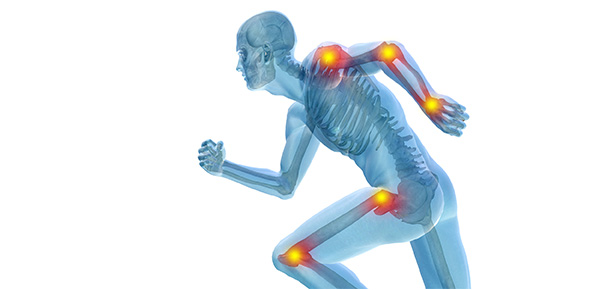Related Flashcards
Related Topics
Cards In This Set
| Front | Back |
|
How do muscles cause movement
|
Skeletal muscles produce movement by exerting force on tendons, which in turn pull on bones or other structures. Most muscles cross at least one joint and are attached to the articulating bones that form that joint
|
|
Why do the two bones of a joint not move equally
|
When a muscle contracts, it draws one articulating bone towards the other, but the two bones do not move equally in response to the contraction. One bone is held in position because other muscles contract to pull it in the opposite direction or because its structure makes it less movable
|
|
Compare the origin of a muscle with its insertion
|
The attachment of a muscle to the more stationary bone is called its origin.
The attachment of the muscle to the more movable bone is called its insertion.
The fleshy portion of the muscle between the origin and the insertion is called the belly (gaster)
|
|
Describe how muscles are arranged as functional groups
|
Most movements require skeletal muscles acting in groups rather than as individuals and are arranged into opposing pairs:
flexors vs extensors supinators vs pronators
abductors vs adductors elevators vs depressorsmedial vs lateral rotators protractors vs retractors
|
|
Agonist
|
A muscle that produces a desired action is the prime mover or agonist (biceps brachii for flexion of the forearm)
|
|
Antagonist
|
The muscle that opposes the desired motion is the antagonist; it must be relaxed while the agonist is contracted (triceps brachii for flexion of the forearm). If the agonist and antagonist contracted with equal force simultaneously, the net movement produced would be no movement
|
|
Synergist
|
Most movements require the action(s) of synergists, muscles that serve to steady the desired movement, preventing unwanted movements. Ex:--the biceps brachii is the prime mover for flexion at the elbow, while the coracobrachialis and the brachialis helps the action
|
|
Fixator
|
Other muscles act as fixators that stabilize the origin of the agonist to allow the prime movement to occur more efficiently (muscles of the scapula)
|
|
What causes motion?
|
Motion results from the alternating contraction (shortening) and relaxation of muscles
|
|
The prime function of muscle is to convert chemical energy (ATP) into mechanical energy that can be used to
|
Generate force, perform work, and produce movements
|
|
Skeletal muscle
|
Skeletal muscle is striated muscle and is voluntary (it can be controlled consciously). It can only be stimulated by the nervous system
|
|
Cardiac muscle
|
Cardiac muscle is striated muscle. It is involuntary (no conscious control). It can be stimulated or inhibited by either the nervous or the endocrine systems
|
|
Smooth muscle
|
Smooth muscle is nonstriated and also involuntary. It also can be stimulated or inhibited by either the nervous or endocrine function
|
|
Motion
|
Motion can be obvious body movements or less noticeable motions such as heartbeat and gut movement
|
|
Stabilize body positions and regulate organ volume
|
Sustained
contractions of skeletal muscle maintain body posture without creating noticeable movement. Sustained contractions of smooth muscle prevent outflow from hollow organs and maintain them at an appropriate volume.
|







